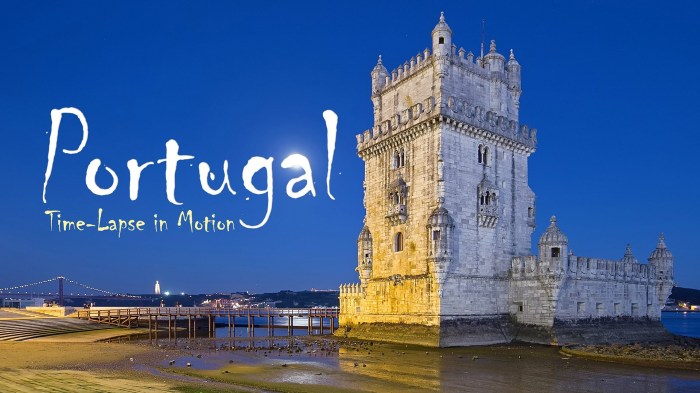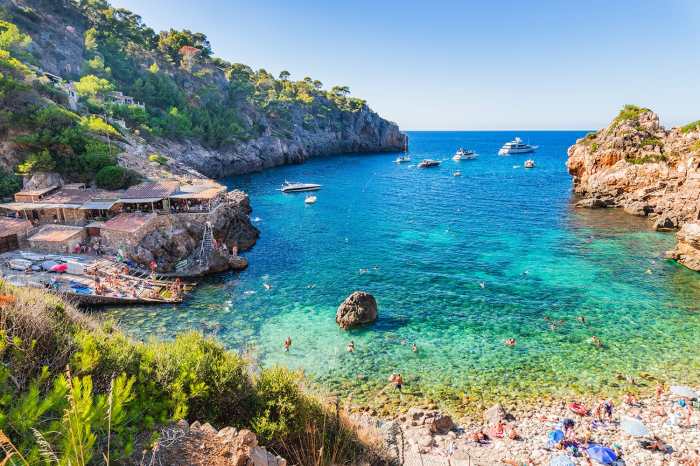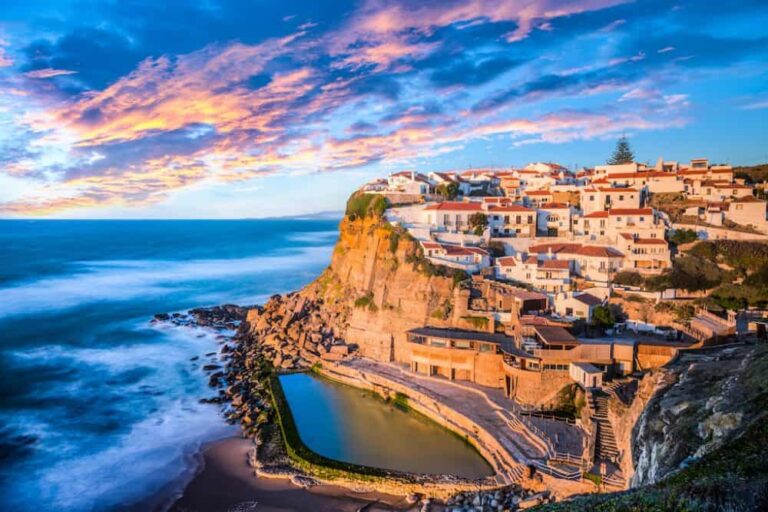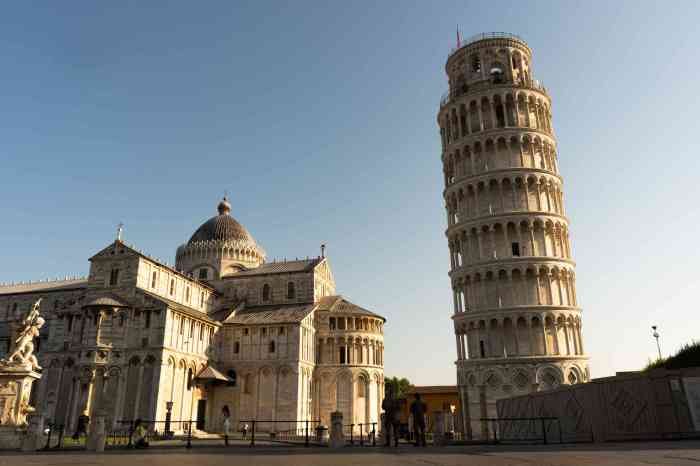Top 25 Places To Visit In Germany
Top 25 Places To Visit In Germany – From the iconic Brandenburg Gate to the breathtaking Bavarian Alps, Germany is a country overflowing with history, culture, and natural beauty. This list will guide you through the most captivating spots, ensuring you don’t miss a single gem on your German adventure.
Get ready to explore the heart of Europe, where ancient castles whisper tales of the past and vibrant cities pulse with modern energy.
Whether you’re a history buff, an art enthusiast, a nature lover, or a foodie, Germany has something to offer everyone. This comprehensive guide will help you discover the top 25 places to visit in Germany, ensuring you experience the best this incredible country has to offer.
Germany: A Land of History, Culture, and Natural Beauty
Germany, a nation steeped in history, culture, and breathtaking landscapes, beckons travelers from around the globe. From the iconic Brandenburg Gate in Berlin to the majestic Neuschwanstein Castle in Bavaria, Germany boasts a diverse range of attractions that cater to every interest.
Whether you’re an art enthusiast, a history buff, a nature lover, or a foodie, Germany has something to offer. This article aims to guide you through the top 25 places to visit in Germany, ensuring an unforgettable travel experience.
Germany’s Rich History and Culture
Germany’s history is rich and complex, shaped by centuries of political, social, and economic transformations. From the Roman Empire to the Holy Roman Empire, from the Reformation to the Industrial Revolution, Germany has played a significant role in shaping the course of European history.
Its cultural heritage is equally diverse, encompassing art, music, literature, and philosophy.
Iconic Landmarks and Historical Sites
Germany is home to a wealth of iconic landmarks and historical sites that offer a glimpse into the country’s rich and complex past. These sites are not just architectural marvels but also powerful symbols of Germany’s resilience, unity, and cultural heritage.
From the remnants of the Berlin Wall to the majestic Neuschwanstein Castle, each landmark tells a unique story that resonates with visitors from all over the world.
Berlin Wall Memorial
The Berlin Wall Memorial stands as a poignant reminder of the Cold War era and the division of Germany. Built in 1961, the Berlin Wall separated East and West Berlin, symbolizing the ideological divide between communism and capitalism. The memorial, located at the Bernauer Straße, features a preserved section of the wall, along with documentation and exhibits that chronicle the history of the wall and the lives of those who were affected by it.
The memorial is a powerful reminder of the human cost of division and the importance of freedom and unity.
Brandenburg Gate
The Brandenburg Gate, located in Berlin, is one of the most recognizable landmarks in Germany. Built in the late 18th century, the gate served as a symbol of peace and unity for the Prussian state. During the Cold War, the gate was a symbol of division, as it stood on the border between East and West Berlin.
After the fall of the Berlin Wall, the Brandenburg Gate became a symbol of German reunification and a testament to the enduring power of hope and reconciliation.
Neuschwanstein Castle
Perched atop a hill in the Bavarian Alps, Neuschwanstein Castle is a fairytale-like structure that has captured the imaginations of visitors for centuries. Built in the 19th century by King Ludwig II of Bavaria, the castle is a testament to the king’s love of art, music, and mythology.
Its whimsical architecture, featuring turrets, towers, and elaborate decorations, has inspired countless stories and films, making it one of the most popular tourist destinations in Germany.
Cologne Cathedral
Cologne Cathedral, a towering Gothic masterpiece, is a symbol of German faith and architectural ingenuity. Construction on the cathedral began in the 13th century and continued for over six centuries. The cathedral’s twin spires, soaring over 150 meters high, are a defining feature of the Cologne skyline.
The cathedral is a UNESCO World Heritage Site and is considered one of the most important religious buildings in Germany.
Vibrant Cities and Urban Exploration
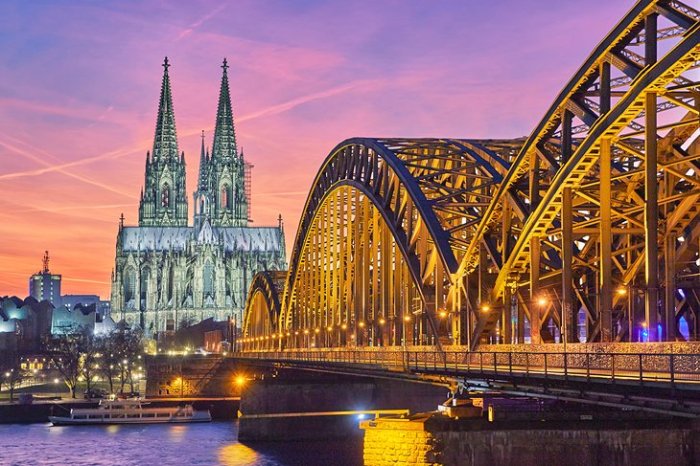
Germany’s cities are a tapestry of history, culture, and modern innovation. From the artistic hub of Berlin to the beer-loving spirit of Munich, each city offers a unique experience. Exploring these urban centers is an essential part of any German adventure.
Berlin: A City of Art, History, and Nightlife
Berlin’s cultural and artistic scene is vibrant and diverse, reflecting its tumultuous past and its forward-looking present. The city is home to numerous world-class museums, theaters, and galleries. The Pergamon Museum, with its iconic Ishtar Gate and Pergamon Altar, is a must-visit for history enthusiasts.
The East Side Gallery, a preserved section of the Berlin Wall, is a poignant reminder of the city’s division and reunification. Berlin’s nightlife is legendary, with a wide range of bars, clubs, and live music venues catering to all tastes.
Munich: A Blend of Tradition and Modernity
Munich, the capital of Bavaria, is known for its rich history, traditional culture, and lively atmosphere. The city is famous for its iconic landmarks, including the Frauenkirche, the Deutsches Museum, and the Hofbräuhaus, a world-renowned beer hall. Munich is also home to the world-famous Oktoberfest, a two-week festival held annually in September and October.
This festival attracts millions of visitors from around the globe and features traditional Bavarian food, music, and, of course, beer.
Hamburg: A Harbor City with Charm
Hamburg, Germany’s second-largest city, is a vibrant port city with a rich maritime history. Its harbor is a major shipping hub and a popular tourist destination, with iconic landmarks like the Elbphilharmonie, a modern concert hall with stunning architecture. The city’s canals and bridges add to its unique charm, offering picturesque views and opportunities for boat tours.
Hamburg also boasts a diverse architectural landscape, with a blend of historic buildings and modern structures.
Frankfurt: A Financial Hub with Cultural Gems
Frankfurt, located in the heart of Germany, is a major financial center and a hub for international business. The city’s skyline is dominated by skyscrapers, including the iconic Commerzbank Tower. Frankfurt also boasts a rich cultural heritage, with numerous museums, theaters, and art galleries.
The Städel Museum, known for its extensive collection of European art, is a must-visit for art enthusiasts. Frankfurt’s historic Old Town, with its timber-framed houses and cobblestone streets, offers a glimpse into the city’s past.
Natural Wonders and Scenic Landscapes
Germany is not only a land of history and culture, but also a land of breathtaking natural beauty. From towering mountains to rolling hills and pristine forests, the country offers a diverse array of landscapes that will leave you in awe.
The Bavarian Alps
The Bavarian Alps, a majestic mountain range that stretches across southern Germany, is a haven for outdoor enthusiasts. The region is renowned for its stunning scenery, with snow-capped peaks, crystal-clear lakes, and lush meadows. The Bavarian Alps are home to some of Germany’s most popular hiking trails, ranging from gentle strolls to challenging climbs.
Hikers can enjoy panoramic views of the surrounding mountains and valleys, as well as encounter a variety of flora and fauna. The Bavarian Alps are also a winter wonderland, with numerous ski resorts offering a wide range of slopes for skiers and snowboarders of all levels.
The region’s charming villages, with their traditional architecture and cozy atmosphere, provide a perfect base for exploring the surrounding mountains.
The Black Forest
The Black Forest, a mountainous region in southwestern Germany, is known for its dense forests, rolling hills, and picturesque villages. The region’s name comes from the dark evergreen trees that cover its slopes, creating a mystical and enchanting atmosphere.The Black Forest is a popular destination for hiking, cycling, and skiing.
Visitors can explore the region’s many trails, which wind through forests, meadows, and villages. The Black Forest is also home to a number of charming towns and villages, each with its own unique character and history. Many of these villages are known for their traditional wooden houses, cuckoo clocks, and other handicrafts.
The Saxon Switzerland National Park
The Saxon Switzerland National Park, located in the eastern part of Germany, is a unique geological formation. The park is characterized by its dramatic sandstone formations, which have been carved by wind and water over millions of years. The park’s sandstone cliffs, towers, and gorges create a breathtaking landscape that is unlike anything else in Germany.The Saxon Switzerland National Park is a popular destination for hiking, rock climbing, and kayaking.
Visitors can explore the park’s many trails, which lead to stunning viewpoints and hidden caves. The park is also home to a variety of wildlife, including deer, wild boar, and birds of prey.
The Wadden Sea
The Wadden Sea, a unique ecosystem located along the North Sea coast of Germany, is a UNESCO World Heritage Site. The Wadden Sea is characterized by its vast mudflats, which are exposed at low tide, and its rich birdlife.
The mudflats are home to a variety of marine life, including crabs, mussels, and worms. The Wadden Sea is also a vital stopover point for millions of migratory birds each year.The Wadden Sea is a popular destination for birdwatching, mudflat hiking, and kayaking.
Visitors can explore the mudflats at low tide, observing the marine life and the birds that feed there. The Wadden Sea is a truly unique and fascinating natural wonder.
Cultural Experiences and Local Traditions
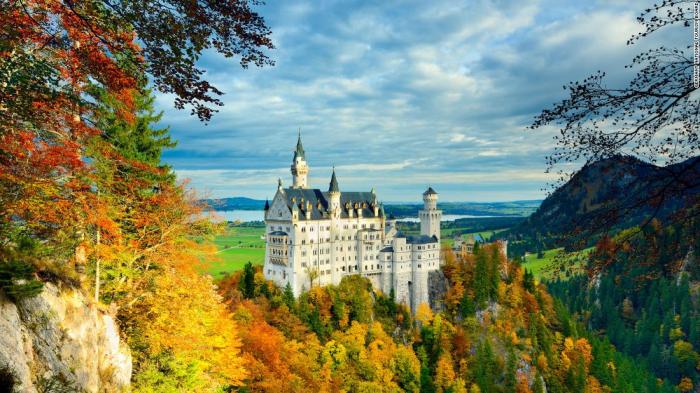
Germany is a country brimming with rich cultural traditions, from its delectable cuisine to its vibrant festivals and captivating music. A journey through Germany is an immersion into a tapestry of customs and experiences that have been woven into the very fabric of the nation.
Culinary Delights
German cuisine is known for its hearty and flavorful dishes, often rooted in regional specialties and traditional recipes passed down through generations. Each region boasts its own culinary identity, reflecting the local ingredients and cooking styles.
- Bavaria:Famous for its pork dishes, such as Schweinshaxe (roasted pork knuckle) and Weißwurst (white sausage), as well as its hearty potato dumplings (Knödel).
- Saxony:Known for its hearty potato dishes, such as Kartoffelsalat (potato salad) and Kartoffelpuffer (potato pancakes), and its meat-based dishes like Gulasch (stew) and Sauerbraten (marinated pot roast).
- North Sea Coast:Celebrates fresh seafood, particularly fish and shellfish, often prepared in simple but flavorful ways, such as pan-fried or baked with herbs.
- Black Forest:Renowned for its Black Forest Cake, a layered chocolate cake filled with cherries and whipped cream, as well as its regional specialties, such as Maultaschen (dumplings filled with meat and spinach).
The Oktoberfest Experience
The Oktoberfest, held annually in Munich, is the world’s largest folk festival, attracting millions of visitors from around the globe. The celebration, which spans 16 to 18 days, offers a unique cultural experience that encompasses traditional Bavarian food, music, and revelry.
- Beer Tents:The heart of the Oktoberfest experience lies in the massive beer tents, where visitors can enjoy traditional Bavarian beers, such as the famous Oktoberfestbier, alongside hearty meals like Schweinshaxe and Hendl (roasted chicken).
- Traditional Attire:The festival is a celebration of Bavarian culture, and many visitors dress in traditional attire, including Lederhosen (leather shorts) for men and Dirndl (a traditional dress) for women.
- Live Music:The beer tents come alive with traditional Bavarian music, including oompah bands and folk singers, creating a lively and festive atmosphere.
- Rides and Attractions:Beyond the beer tents, the Oktoberfest offers a wide array of rides and attractions, from traditional carousels to modern thrill rides, catering to all ages.
Festive Christmas Markets
Germany is renowned for its charming Christmas markets, which transform city squares and streets into magical winter wonderlands. These markets, known as Weihnachtsmärkte, offer a unique blend of festive traditions, local crafts, and culinary delights.
- Traditional Crafts:Stalls are adorned with handcrafted ornaments, wooden toys, and traditional Christmas decorations, offering a glimpse into the artistry of local artisans.
- Seasonal Treats:The markets are a haven for indulging in seasonal treats, such as Glühwein (mulled wine), Lebkuchen (gingerbread cookies), and roasted nuts, creating a warm and inviting atmosphere.
- Festive Atmosphere:The markets are filled with the sounds of carols, the aroma of roasted chestnuts, and the twinkling lights of Christmas decorations, creating a truly magical experience.
The Sound of Germany
Germany has a rich musical heritage, encompassing a diverse range of genres, from classical music to rock and electronic music. The country has produced some of the world’s most celebrated composers and musicians, leaving an indelible mark on the global music scene.
- Classical Music:Germany is the birthplace of renowned composers such as Johann Sebastian Bach, Ludwig van Beethoven, and Johannes Brahms, whose works continue to be performed and celebrated worldwide.
- Rock and Pop:Germany has a vibrant rock and pop music scene, with bands like Scorpions, Rammstein, and Kraftwerk gaining international recognition for their unique sounds and energetic performances.
- Electronic Music:Germany is a pioneer in electronic music, with genres like techno and trance originating in the country and gaining global popularity, particularly in cities like Berlin.
Museums and Cultural Institutions
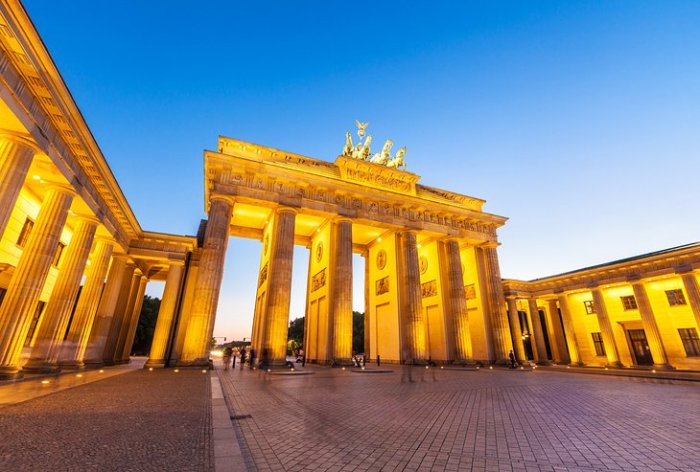
Germany is renowned for its rich cultural heritage, and its museums and cultural institutions offer a captivating journey through history, art, and science. From world-renowned art collections to cutting-edge scientific exhibits, these institutions provide a glimpse into the country’s past, present, and future.
Pergamon Museum
The Pergamon Museum in Berlin is a treasure trove of ancient artifacts, showcasing the grandeur of civilizations from across the ancient world. The museum’s most famous exhibits include the Pergamon Altar, a massive, intricately carved structure dedicated to the Greek god Zeus; the Ishtar Gate, a vibrant, glazed brick gateway from ancient Babylon; and the Market Gate of Miletus, a well-preserved example of Roman architecture.
The Pergamon Museum is a must-visit for anyone interested in ancient history and art.
Germany is a great place to visit, with tons of history and culture. You could spend weeks exploring all the castles, museums, and charming villages. But if you’re looking for a beach getaway, you might want to check out Croatia.
It’s a beautiful country with stunning beaches and islands, like the ones listed on this site: Top 10 Places To Visit in Croatia. After a relaxing beach vacation, you’ll be ready to head back to Germany and continue your exploration of the top 25 places to visit!
Alte Pinakothek
The Alte Pinakothek in Munich houses a remarkable collection of European paintings spanning from the Middle Ages to the 18th century. The museum boasts masterpieces by renowned artists such as Albrecht Dürer, Raphael, Rembrandt, and Rubens. The Alte Pinakothek is a testament to the artistic brilliance of Europe’s Golden Age and offers a unique opportunity to explore the evolution of painting over centuries.
Deutsches Museum
The Deutsches Museum in Munich is a sprawling complex dedicated to the history of science and technology. The museum showcases a vast array of exhibits, from early steam engines and automobiles to modern computers and space exploration technology. Visitors can interact with exhibits, learn about scientific principles, and gain a deeper understanding of how technology has shaped the world.
The Deutsches Museum is a fascinating destination for science enthusiasts and anyone curious about the evolution of human ingenuity.
Kunsthistorisches Museum
The Kunsthistorisches Museum in Vienna is home to one of the world’s most impressive collections of Austrian and European art. The museum’s collection includes masterpieces by artists such as Michelangelo, Raphael, and Rembrandt, as well as a comprehensive collection of Austrian art, from the Middle Ages to the present day.
The Kunsthistorisches Museum offers a unique opportunity to explore the artistic heritage of Austria and Europe, showcasing the evolution of art from the Renaissance to the modern era.
Travel Tips and Practical Information
Planning a trip to Germany can be exciting, but it’s also important to be prepared. This section will provide you with essential travel tips and practical information to ensure a smooth and enjoyable experience.
Best Time to Visit Germany
The best time to visit Germany depends on your interests and preferred weather conditions. Here’s a table outlining the ideal seasons for various activities:
| Season | Weather | Activities |
|---|---|---|
| Spring (April-May) | Mild temperatures, blooming flowers | Hiking, biking, exploring gardens |
| Summer (June-August) | Warm and sunny, occasional thunderstorms | Outdoor festivals, swimming, sightseeing |
| Autumn (September-October) | Cool and crisp, vibrant fall foliage | Wine festivals, hiking, enjoying the changing colors |
| Winter (November-March) | Cold and snowy, festive atmosphere | Christmas markets, skiing, ice skating |
Transportation Options in Germany
Germany boasts an excellent public transportation system, making it easy to get around.
Trains
The German railway system (Deutsche Bahn) is renowned for its efficiency and punctuality. High-speed trains (ICE) connect major cities quickly, while regional trains offer a more scenic and relaxed journey.
Buses
Buses are a cost-effective option for traveling between cities and towns, particularly for longer distances. FlixBus and other companies offer affordable fares and frequent departures.
Germany’s got castles, beer halls, and a whole lot of history. But if you’re looking for something a little different, check out Top 10 Places To Visit in Namibia for some seriously stunning landscapes and unique wildlife experiences. Then, you can come back to Germany and hit up the Neuschwanstein Castle or the Brandenburg Gate – you can’t go wrong either way!
Flights
For long-distance travel within Germany or to international destinations, flying is a convenient option. Several airports serve major cities, including Frankfurt, Munich, and Berlin.
Accommodation Options in Germany
Germany offers a wide range of accommodation options to suit every budget and preference.
Budget-Friendly
Hostels
Hostels are popular among budget travelers, offering shared rooms and common areas.
Airbnb
Rent rooms or entire apartments from local hosts for a more immersive experience.
Guest Houses
Small, family-run guesthouses offer a cozy and affordable stay.
Mid-Range
Hotels
A variety of hotels are available, from basic to mid-range options, offering amenities like Wi-Fi and breakfast.
Apartments
Furnished apartments offer more space and independence than hotels.
Luxury
Five-Star Hotels
Experience luxurious accommodations, exceptional service, and world-class amenities.
Boutique Hotels
Unique and stylish hotels often located in historic buildings or charming neighborhoods.
Practical Tips for Navigating Germany, Top 25 Places To Visit In Germany
Here are some practical tips to help you navigate Germany:
Language
While English is widely spoken in tourist areas, learning a few basic German phrases can enhance your experience.
“Guten Tag” (Good day)”Bitte” (Please)”Danke” (Thank you)”Entschuldigung” (Excuse me)
Currency
The official currency in Germany is the Euro (€).
Germany is a great place to visit, with tons of cool historical sites and charming cities. But if you’re looking for something a little more off the beaten path, you might want to check out the Faroe Islands. They’re known for their dramatic landscapes and unique culture.
If you’re interested in exploring the Faroe Islands, check out this list of Top 10 Places To Visit In The Faroe Islands. After your trip to the Faroe Islands, you can head back to Germany and explore some of the top 25 places to visit there.
Safety Precautions
Germany is generally a safe country, but it’s essential to take common safety precautions:
- Be aware of your surroundings, especially in crowded areas.
- Keep your valuables safe and secure.
- Avoid walking alone at night in unfamiliar areas.
Conclusion
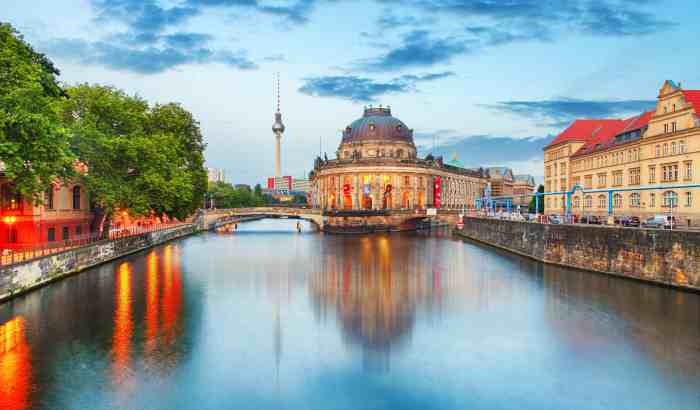
From the bustling metropolis of Berlin to the fairytale castles of Bavaria, Germany offers a captivating blend of history, culture, and natural beauty. Whether you’re an art enthusiast seeking masterpieces in world-renowned museums, a history buff exploring ancient ruins and medieval towns, or an adventure seeker hiking through stunning landscapes, Germany has something for everyone.
Germany’s Appeal as a Travel Destination
Germany’s diverse offerings cater to a wide range of interests, making it a perfect destination for solo travelers, couples, families, and groups. The country’s rich history, vibrant culture, and stunning landscapes provide ample opportunities for exploration and discovery.
- History and Culture:Germany boasts a rich history and cultural heritage, with iconic landmarks like the Brandenburg Gate, the Cologne Cathedral, and the Neuschwanstein Castle.
- Natural Beauty:From the breathtaking Alps to the serene Black Forest, Germany’s natural landscapes offer a variety of outdoor adventures, from hiking and cycling to skiing and snowboarding.
- Vibrant Cities:Germany’s cities are known for their unique character and lively atmosphere, with Berlin’s edgy art scene, Munich’s traditional charm, and Hamburg’s maritime history.
- Gastronomy and Beer:Germany is renowned for its delicious cuisine, featuring hearty dishes like schnitzel and sauerbraten, and its world-famous beer culture.
Conclusive Thoughts
Germany is a country that will leave you wanting more. From its iconic landmarks and historical sites to its vibrant cities and stunning natural landscapes, there’s something for everyone. So, start planning your trip today and discover the magic of Germany for yourself.
Expert Answers: Top 25 Places To Visit In Germany
What is the best time to visit Germany?
The best time to visit Germany depends on your interests. Spring and fall offer pleasant weather for sightseeing and outdoor activities, while summer is ideal for enjoying the festivals and outdoor events. Winter is a magical time to experience the Christmas markets and snowy landscapes.
How much does it cost to travel to Germany?
The cost of travel to Germany varies depending on your travel style and budget. You can find affordable accommodation and transportation options, but it’s essential to plan your trip in advance and book flights and accommodation early to secure the best deals.
What are the must-try German foods?
German cuisine is known for its hearty and flavorful dishes. Must-try foods include schnitzel, sauerbraten, bratwurst, pretzels, and strudel. Don’t forget to indulge in the local beers and wines.
Is it safe to travel to Germany?
Germany is generally a safe country to travel to. However, it’s always wise to take precautions and be aware of your surroundings, especially in crowded areas.


